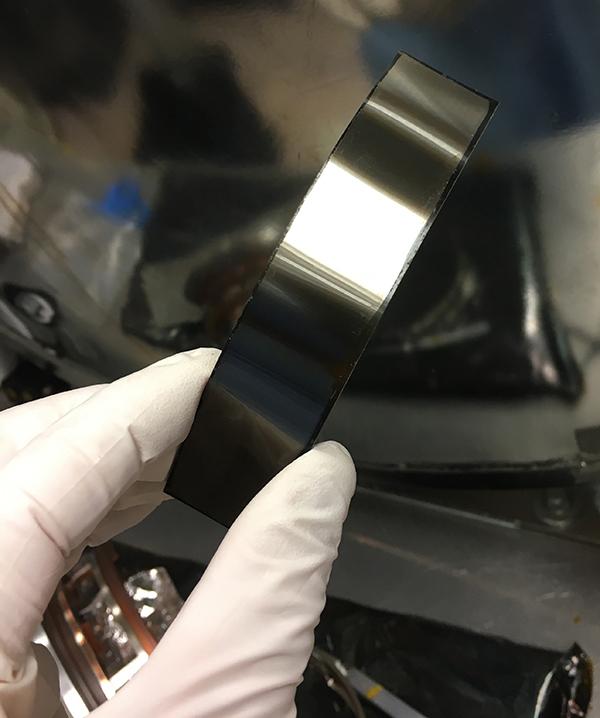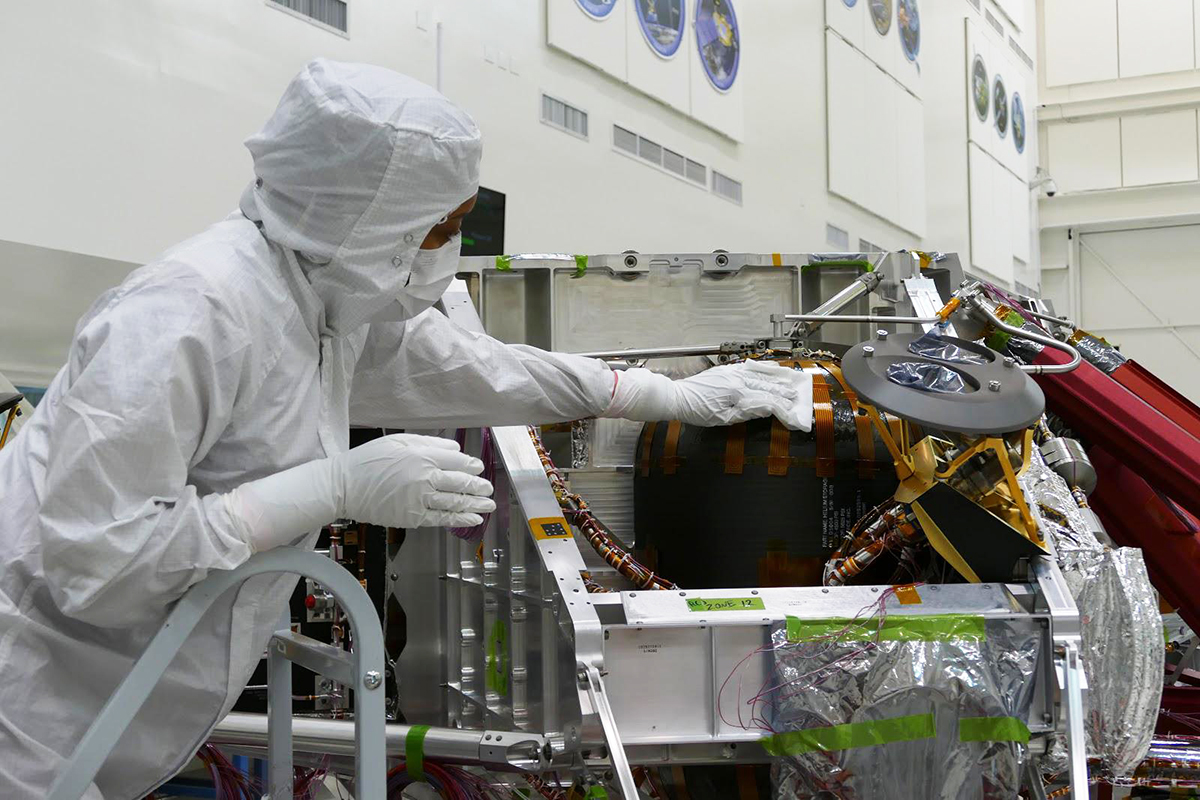
Concentrating on Microbes
Subheadline
Space station germ testing improves wastewater monitoring
Tracking the spread of COVID-19 through communities provided essential data for public-health officials and individuals to make informed decisions during the pandemic. One method that proved useful was collecting, concentrating, and testing municipal wastewater for the presence of the virus that caused the illness. As this testing ramped up, a technology developed for NASA to identify pathogens inside spacecraft saved time and produced dependable results on Earth.
Several Small Business Innovation Research (SBIR) contracts awarded a few years earlier helped InnovaPrep LLC of Drexel, Missouri, improve its existing bioconcentration process and apply it to automated testing for viruses, bacteria, and other pathogens in the air and water and on surfaces in the International Space Station. In addition to using a new filter material, improving the process, and modifying it for space, the company developed new fabrication steps to semi-automate production processes. Prior to the SBIR work, the company hand-built the disposable filter, called a pipette, producing about 200 a week. Now the output is 12,000 per week with a system that can easily scale up to meet increased demand.
The improved production came just in time. InnovaPrep could easily fill the orders from public-health departments, commercial laboratories, and researchers as COVID-19 monitoring efforts were put in place. Andy Page, chief technology officer with InnovaPrep, credits NASA with the company’s ability to advance its AirPrep and FluidPrep product lines.
“We had a lot of good interaction with NASA scientists who provided a lot of good insight. That collaboration is super-valuable,” he said. “The SBIR program allows you to discover things that you’re not going to be able to easily discover without that funding.”
Preventing Super Bugs
Pathogens, including some bacteria and viruses, can become more harmful in zero gravity, so keeping a spacecraft safe for astronauts requires vigilance. But sample collection and testing are time-consuming tasks. NASA’s Jet Propulsion Laboratory in Southern California led the effort to make it more efficient using automation, with Kasthuri “Venkat” Venkateswaran, senior research scientist at JPL, working with InnovaPrep to modify its sample-concentration technology for space.
One option to enable faster results is a polymerase chain reaction (PCR) test. PCR rapidly amplifies small segments of genetic material – DNA or RNA – by making many copies. This creates a larger sample for genetic testing, making it easier to identify the type of bacteria or virus present. Targeting specific molecular fragments of viruses or bacteria is preferable in space instead of growing a live culture, a process frequently used on Earth.
“If you are growing microbes in space, that means even one cell will become billions of cells. One cell will not do any harm to human health, but growing that one cell in a closed system is dangerous,” said Venkateswaran. Tiny microbes are difficult to find, so NASA did some research to find out what was living on the space station.
One study required astronauts to wipe surfaces with sterile cloths before sending them to Earth. Once in the lab, the cloths were rinsed in a large amount of water, the resulting liquid was filtered, and the microbes were concentrated into a small amount of liquid for testing. The SBIR technology was meant to concentrate viruses and bacteria, reducing the time and cost required to get results.
72 Tiny Straws
InnovaPrep used its previous pipette structure for the SBIR work, but NASA’s demanding filtration requirements compelled the company to look for a new material. Testing showed the best option was a hollow-fiber material made of what looks like 72 tiny straws, which make up part of the filter inside the pipette. A better filter means more viral and bacterial cells are captured per sample.
The company then automated the application of glue that holds the filters in place. This improved the performance and reliability of the device while serving as a first step towards improved production.
NASA requirements also prompted InnovaPrep to advance the quality of a foaming liquid that removes the trapped microbes from the filter.
To concentrate a sample in preparation for analysis – including PCR testing – a pipette containing the filter captures molecules and microbes suspended in a water sample. The next step, called wet foam elution, pushes the foaming liquid into the pipette, across the inner surface of the filter to recover the organisms or contaminants from a liquid sample. This pushes them down into a vial, ready for testing.
NASA’s application required modifications to the process to function in space, along with a longer shelf life for the elution fluid. The liquid canisters were modified to dispense the liquid in microgravity and sit for a year or more before being used. With some work, InnovaPrep met all of NASA’s requirements.
“Wet foam elution is the backbone of our company. It’s used in all our products,” said Ann Packingham, marketing and distribution director for InnovaPrep. “NASA really helped us improve the formulation and build a better canister. We were able to improve our shelf life by four to six months.”
Rover Dry Wash
The bioconcentration system created for zero gravity hasn’t been used on the space station yet, but companies on Earth are saving time and money with the technology upgrades. One advantage of the water and air monitoring equipment InnovaPrep offers is that it’s simple to use. Unlike growing cultures in a lab, no special training is required.
It’s not just tracking a pandemic that requires the concentration and testing of pathogens. Recreational facilities use InnovaPrep technology to monitor water quality in swimming pools. Hospitals use it to screen indoor spaces to keep them as sterile as possible. Water from cooling towers and municipal water systems is regularly tested for legionella bacteria, which can cause a severe form of pneumonia.
A major U.S. brewer concentrates its finished beer to look for spoilage organisms as part of the quality-control process. Pharmaceutical companies do the same, concentrating ingredients to identify spoilage organisms and other contaminants – the kits can also concentrate inorganic particulate matter. Businesses producing consumer goods such as dishwashing soap and lotions also look for contaminants that can cause discoloration or unpleasant smells in the products.
Farmers test irrigation water for pathogens, and food manufacturers monitor produce and equipment rinses to eliminate food-borne diseases. The InnovaPrep FluidPrep concentrator now used by businesses is so efficient, in fact, that JPL developed a series of cleanroom protocols using the commercial device.
When NASA sends hardware to other planetary bodies, technologists try to make sure it’s as clean as possible. The intent is to remove microscopic hitchhikers from Earth to limit opportunities for contamination. Cleanroom staffers use a three-foot square piece of sterile cloth to wipe down large surfaces, removing as much biomatter as possible.
“If you increase the surface area to collect, then obviously you increase the liquid you use. And you have to do cumbersome filtering,” said Venkateswaran. “All the material must be DNA-free, so we asked InnovaPrep to come up with a product that is more sterile than what they had. They developed the technology to ensure their products are free of biomolecules.”
The published research verifying the efficacy of the cleanroom procedures helped InnovaPrep add new customers that require a sterile environment. But InnovaPrep’s biggest customer base is still wastewater surveillance. When the prevalence of COVID-19 drops, it’s necessary to test a greater volume of wastewater to understand what variants and levels of virus are present.
This makes technology to concentrate the relevant genetic material all the more essential. “It’s very, very difficult to detect really low concentrations of microbes that could be present in a cleanroom or in large volumes of wastewater,” said Page. With the company’s current products, it now takes less than 10 minutes to filter about a quart of liquid and end up with less than a quarter of a teaspoon containing the microbes, he said. “That gives us over a thousand times higher concentration.”
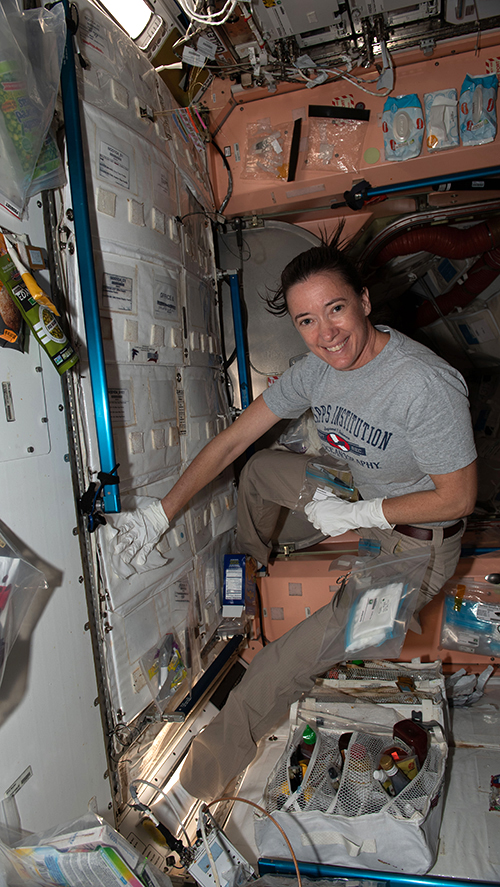
NASA astronaut Megan McArthur collects microbial samples from surfaces inside the space station to study the microbes associated with closed habitation and predict those that may pose a threat to crew health. Credit: NASA
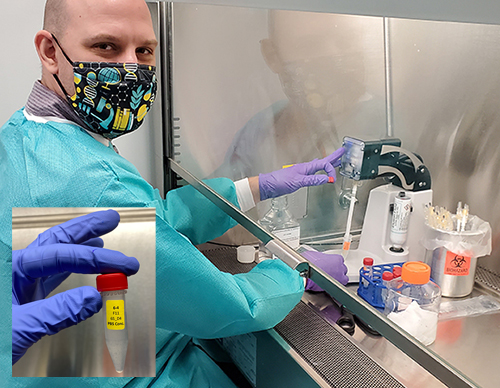
After the cloths used to wipe down the space station arrived on Earth, they were rinsed in the water jar seen here with an orange lid to remove microbes. That liquid was then concentrated into this vial (inset) for testing by InnovaPrep’s CP Select system. Credit: NASA
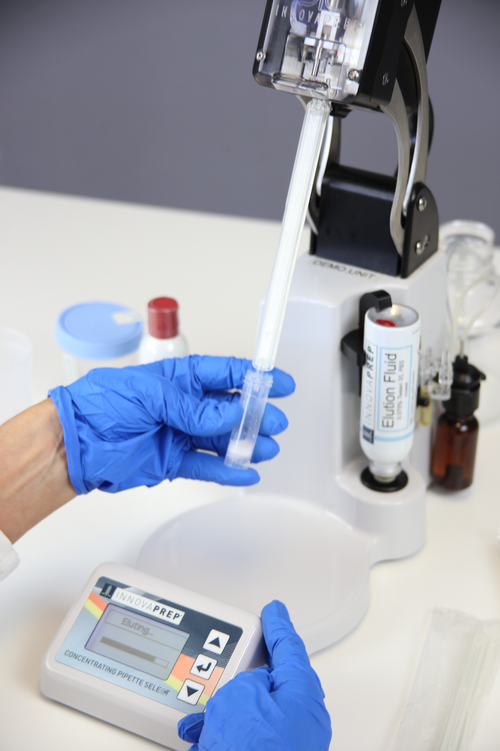
Concentrating the microbes in gallons of water down to a few ounces for testing could be a time-consuming task. But the specialized InnovaPrep filtration system called CP Select, which benefited from NASA expertise, can quickly do just that on Earth. Credit: InnovaPrep LLC

Wiping down the hardware of the Perseverance rover is one step in NASA’s Planetary Protection strategy to limit the number of Earth microbes going to Mars. The Jet Propulsion Laboratory cleanroom, one of the cleanest places on the planet, developed procedures using InnovaPrep technology to check for any microbes left on the surface before flight. Credit: NASA













